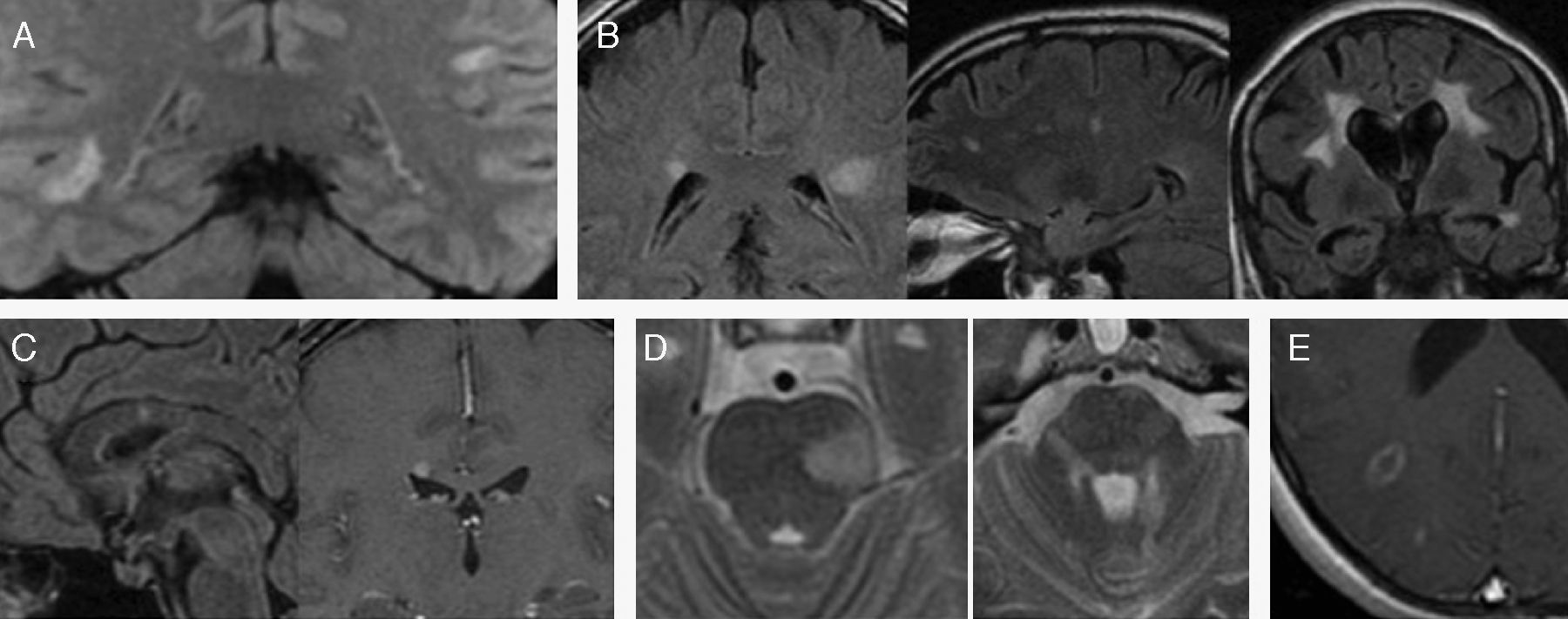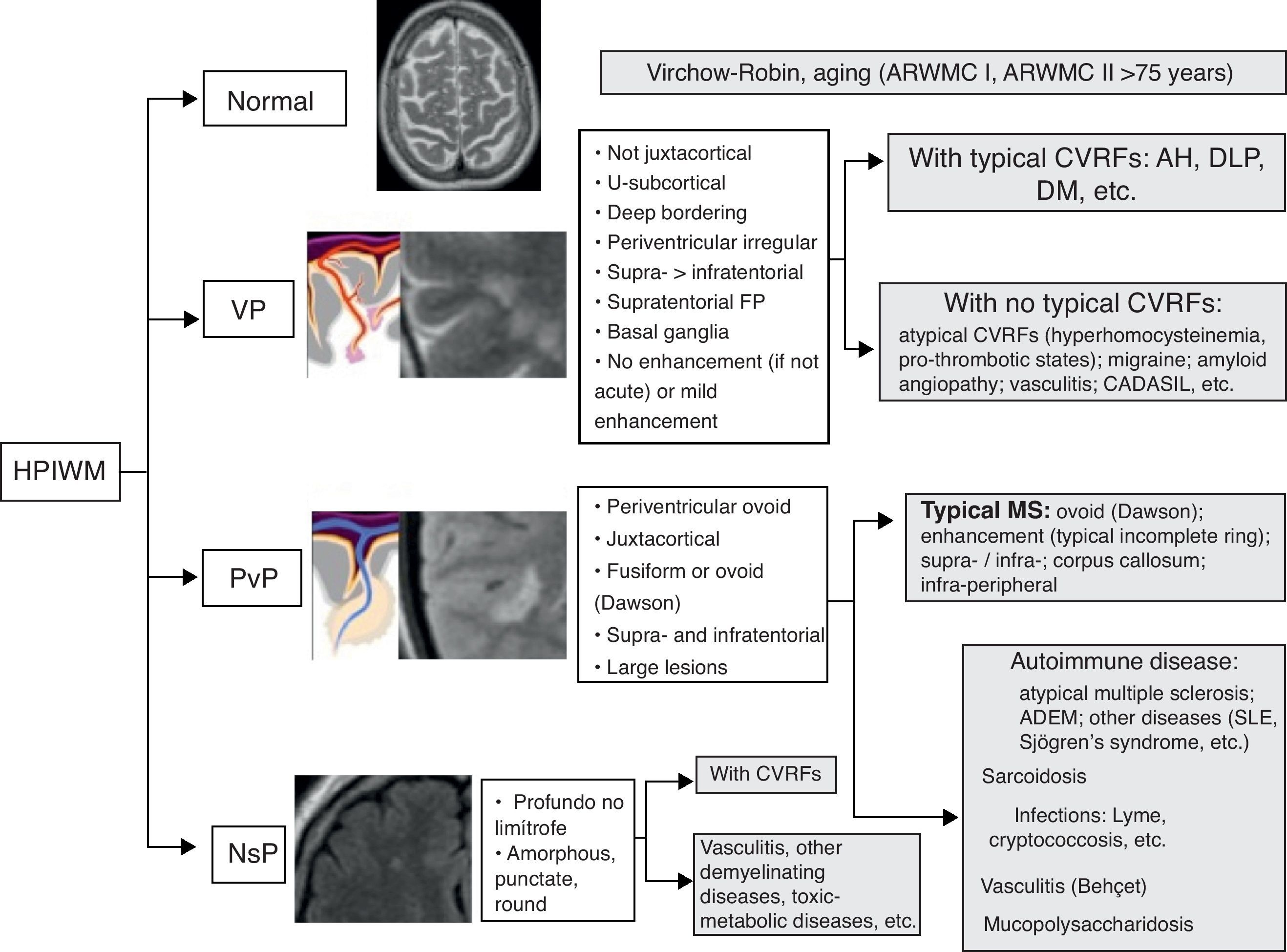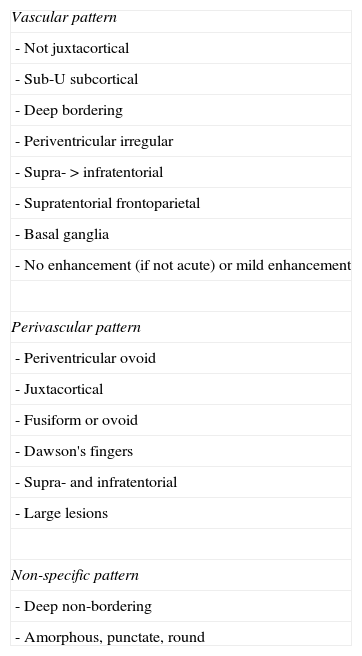The presence of hyperintense punctiform images in the white matter in T2-weighted magnetic resonance (MR) sequences is a very common finding and is occasionally a diagnostic challenge for the radiologist.
The present article attempts, using an anatomical approach to the brain circulation, as well as from histopathology correlation studies, to simplify the task of interpreting these images from the description of the three main patterns of hyperintense punctiform images in the white matter: vascular pattern, which corresponds to microvascular lesions; perivascular pattern, which represents inflammatory disease of which the paradigm is multiple sclerosis; and a non-specific pattern, which has to be a microvascular disease.
From the various semiological elements in the MR images, a predominant pattern can be determined in each case and, in this way, helps in the differential diagnosis.
La presencia de múltiples imágenes puntiformes hiperintensas en la sustancia blanca (IPHSB) en las secuencias de resonancia magnética (RM) ponderadas en T2 es un hallazgo muy frecuente y, en ocasiones, un reto diagnóstico para el radiólogo.
Este artículo pretende, a través de una aproximación a la anatomía de la microcirculación cerebral, así como a estudios de correlación anatomopatológica, simplificar la tarea de interpretación de estas imágenes a partir de la descripción de tres principales patrones de presentación de IPHSB: patrón vascular (PV), que corresponde a lesiones microvasculares, patrón perivascular (PpV), que representa a la enfermedad inflamatoria cuyo paradigma es la esclerosis múltiple (EM), y patrón inespecífico (PI), que suele deberse a enfermedad microvascular.
A partir de varios elementos semiológicos en las imágenes de RM se puede determinar un patrón predominante en cada caso y, de este modo, acotar el diagnóstico diferencial.



























